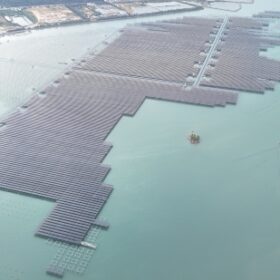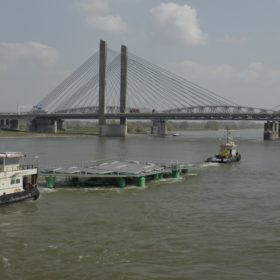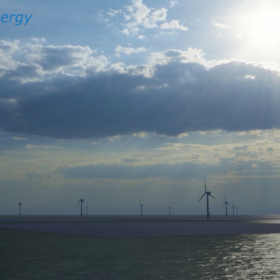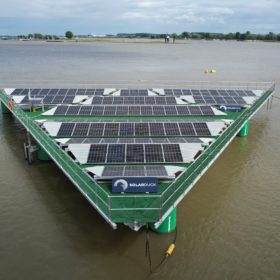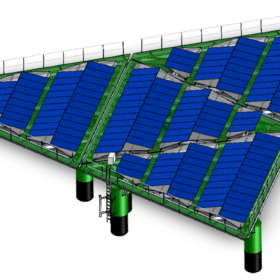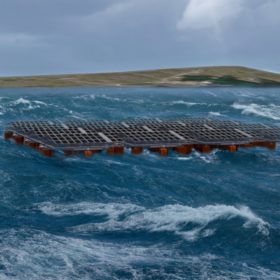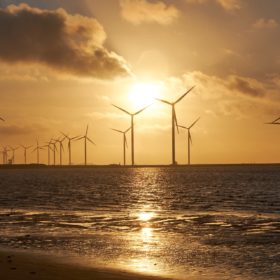‘Typhoon-resistant’ offshore PV project nears completion in China
China Three Gorges Corp. has nearly completed a 180 MW offshore solar plant, designed for typhoon resistance, off the coast of China.
The effects of waves on membrane-based floating photovoltaics
A research group in China has tested how membrane-based floating PV platforms can operate in offgrid scenarios. Their analysis showed that, especially with high wave frequencies, this kind of floating PV installation may suffer from the floater bending stiffness, which could limit both in-plane and out-of-plane motion amplitude.
German-Dutch consortium to build 500 kW offshore solar pilot in North Sea
Germany’s RWE is partnering with offshore PV specialist SolarDuck to build a 0.5 MW floating solar plant near an offshore wind farm in the North Sea.
Simulation tool to measure effect of waves on offshore floating solar
Developed by scientists in Malta, the tool is said to predict yield gains or losses that waves can determine in offshore PV installations. The research group identified three movements an offshore array can be subject to, and for each of them provided specific measurements.
Off-shore PV project with LCOE of €0.15/kWh off the Belgian coast
Oceans of Energy is planning to deploy a 3 MW off-shore floating PV array in the North Sea.
Offshore photovoltaics a step closer
Dutch start-up SolarDuck has secured approval-in-principle for its floating offshore platforms. Its 64 kW pilot project on the inshore water of the Netherlands’ widest river was validated by Bureau Veritas.
Offshore floating PV platform unveiled in the Netherlands
Dutch floating structure specialist Solarduck has built a pilot 65 kW floating PV array that will be connected to a 10 kW electrolyzer to produce hydrogen bonded with a liquid organic hydrogen carrier. The system is relying on the company’s proprietary floating technology that resembles an offshore oil platform.
Dutch startup develops offshore floating PV platform
Dutch startup SolarDuck has developed a triangular structure for floating PV that resembles an offshore oil platform. CEO Koen Burgers told pv magazine that it keeps panels more than 3 meters above the water surface, and claimed that the structure can handle waves and dynamic loads. It will be used in a Dutch pilot project from April.
Equinor, Saipem test offshore solar in Norwegian Sea
The two companies want to test a floating PV array under harsh weather conditions in rough waters for at least a year. The system will be based on a floating solar technology developed by Maritime Moss, a unit of Saipem.
Offshore floating PV may reach maturity in 2030
According to a report from DNV GL, the North Sea may host around 100 MW of floating solar capacity by 2030, and 500 MW by 2035. The LCOE of offshore PV systems is currently estimated at around €354/MWh but in the future it should be close to that of ground-mounted solar parks.
